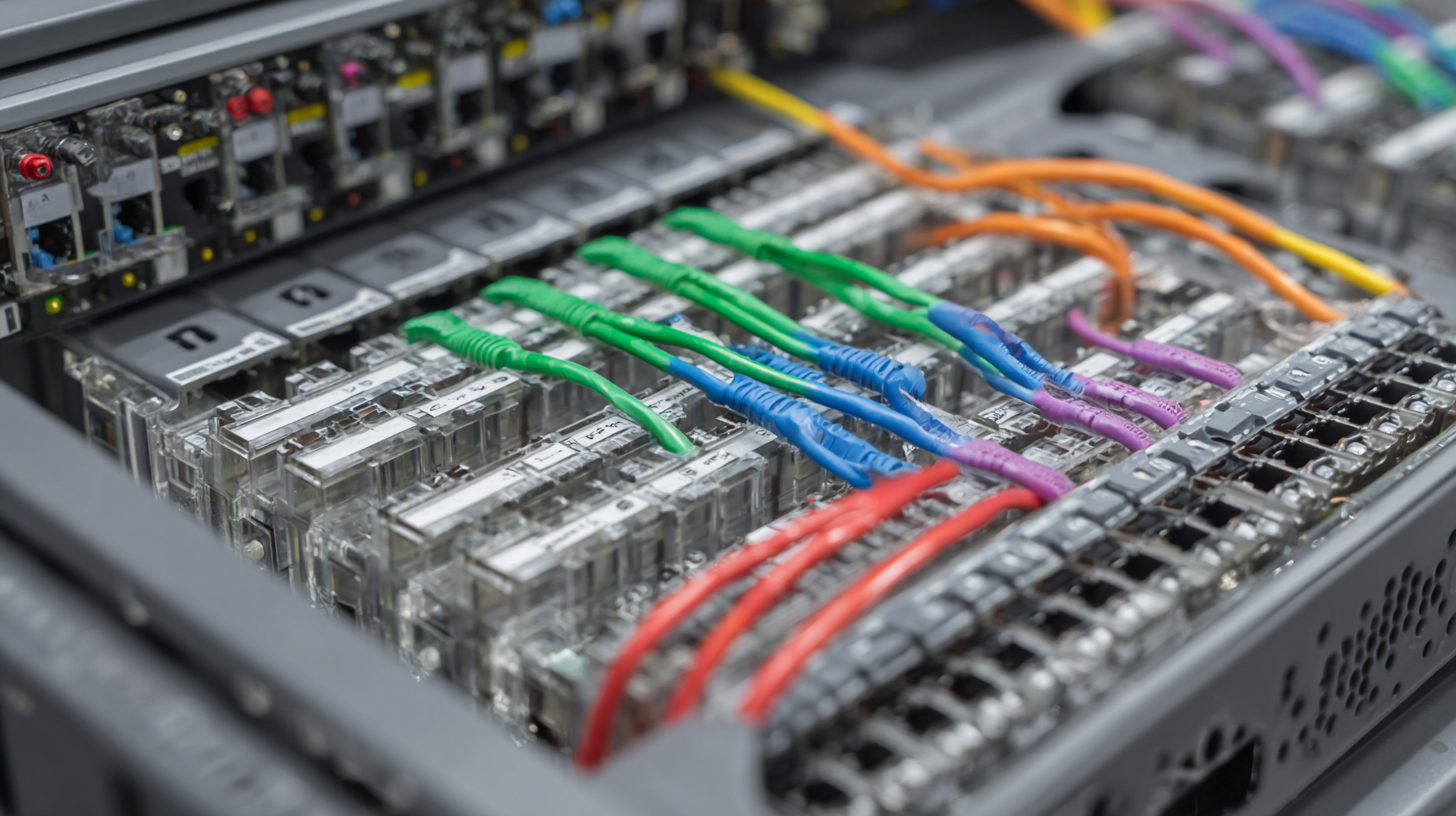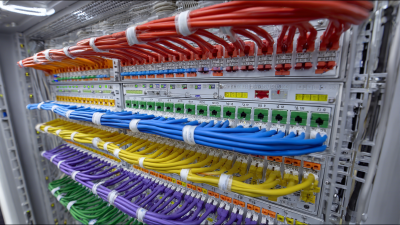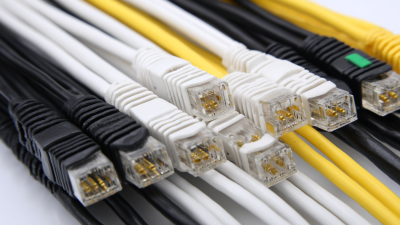5 Best LC Patch Panels for Optimal Network Performance in 2023
In the rapidly evolving landscape of network infrastructure, achieving optimal performance is essential for both businesses and home users alike. Among various components that contribute to a seamless connectivity experience, the LC patch panel stands out as a critical element in network design and implementation. According to a report by the International Data Corporation (IDC), efficient network management can enhance performance by up to 30%, emphasizing the role of high-quality patch panels in minimizing signal loss and improving overall data flow. As organizations increasingly transition to high-speed networks, the demand for reliable and robust LC patch panels has surged. This article explores the top five LC patch panels of 2023, highlighting their features and benefits that cater to the diverse needs of modern networking environments. By understanding the significance of these tools, users can make informed decisions that will impact their network’s efficiency and longevity.

Understanding LC Patch Panels: Definition and Functionality
LC patch panels are crucial components in modern networking, serving as the central point for connecting and managing fiber optic cables. An LC patch panel specifically accommodates LC connectors, which are known for their compact size and high-density capabilities. This design allows for efficient use of space in data centers and telecommunication rooms, enabling organizations to maximize their network infrastructure while maintaining optimal performance.
Functionally, LC patch panels facilitate the organization and distribution of incoming and outgoing fiber connections. They help streamline the patching process—connecting various network devices and ensuring that signals are efficiently routed through the network. Additionally, these panels often include features such as color-coded ports and label slots, which enhance the ease of identification and management. This not only simplifies troubleshooting and maintenance but also supports scalability as networks grow and evolve over time, ensuring that connectivity remains robust and reliable.

Key Features to Consider When Choosing LC Patch Panels
When selecting LC patch panels for optimal network performance, there are several key features to consider. First, the type of connectors used is crucial, as they directly impact the quality of the signal. According to industry reports, high-quality connectors can reduce insertion loss and return loss, which are critical for maintaining network efficiency. Additionally, look for patch panels that support versatility in terms of compatibility with various cabling standards, such as LC, SC, and MTP, to ensure seamless integration into existing infrastructure.

Another vital consideration is the patch panel's build quality and density. A well-constructed patch panel not only ensures longevity but also aids in cable management, which is increasingly important in high-density environments. Reports indicate that more organizations are shifting to higher density solutions to maximize space and improve airflow, thereby enhancing overall network performance. Moreover, features like rear cable management systems can significantly simplify installation and maintenance processes, reducing downtime and operational costs.
Choosing the right LC patch panel tailored to your specific network needs can lead to substantial improvements in performance metrics and overall operational efficiency, making it a worthy investment for organizations looking to future-proof their networking infrastructure.
Top Five LC Patch Panels for Enhanced Network Performance in 2023
In 2023, the need for efficient network performance is more critical than ever, especially as businesses rely increasingly on fiber optics for connectivity. Among the essential components for ensuring seamless communication are LC patch panels, which facilitate the organization and management of fiber optic cables. Recent innovations in this area, particularly from industry leaders, emphasize enhanced performance and design improvements that significantly benefit network infrastructure.
According to recent industry reports, the global market for optical patch panels is expected to expand at a compound annual growth rate (CAGR) of over 10% through the next five years. This surge is attributed to the rising demand for high-speed internet and an increasing number of connected devices. Enhanced LC patch panels not only help in optimizing network performance but also streamline cable management, reducing clutter and improving maintenance trips. With advancements like better thermal efficiency and increased port density, these products are paving the way for future-ready networks that can adapt to varying demands.
In addition, efficient cabling solutions, such as the newly released fiber patch panels by leading providers, focus on not just performance but also organization. Features such as intuitive labeling and modular designs contribute to easier management of the fiber network, which can lead to reduced downtime and improved service quality. As we look ahead, choosing the right LC patch panel will be critical for organizations aiming to enhance their network performance and stay ahead in this rapidly evolving digital landscape.
Comparative Analysis of LC Patch Panel Brands and Models
When selecting an LC patch panel for optimal network performance, it is crucial to consider the technical specifications and brand reputation. A comparative analysis of various brands reveals that manufacturers such as APC, Tripp Lite, and StarTech consistently meet the demands of high-density environments with reliable solutions. According to a report by Allot Communications, 59% of network failures are attributed to hardware misconfigurations, underscoring the importance of investing in quality patch panels that enhance signal integrity and minimize interference.
Recent industry reports, such as those from MarketsandMarkets, indicate that the global market for patch panels is projected to grow at a CAGR of 10.2% from 2021 to 2026. This growth is driven by the increasing demand for data centers and efficient network infrastructure. For example, the Tripp Lite 24-Port LC Patch Panel is praised for its robust construction and ease of installation, while the StarTech 48-Port LC Patch Panel offers greater density, making it suitable for expanding networks. Ultimately, the right choice will depend on specific network requirements, including space, scalability, and the anticipated future demands on bandwidth.
Network Performance Comparison of LC Patch Panels in 2023
Installation and Maintenance Tips for Optimal Network Performance
When setting up an LC patch panel, proper installation is crucial for achieving optimal network performance. One of the essential tips is to ensure that all cable connections are secure and that there’s no excessive bending, which can lead to signal degradation. Always follow the manufacturer's guidelines for cable lengths and adhere to the appropriate bending radii, as this can significantly influence the overall efficiency of your network.
Regular maintenance is equally important to keep your LC patch panels functioning optimally. Periodically inspect the panels for dust and debris, which can affect connectivity. Cleaning the connectors with appropriate optical wipes can prevent any potential loss of signal. Additionally, labeling cables clearly can help streamline any adjustments or troubleshooting that may be necessary in the future, ensuring a more manageable network setup.
By focusing on these installation and maintenance tips, you can enhance the performance of your LC patch panels and ensure a reliable network infrastructure for your organization.
5 Best LC Patch Panels for Optimal Network Performance in 2023
| Model | Port Count | Type | Mounting Style | Installation Difficulty | Maintenance Tips |
|---|---|---|---|---|---|
| LC-24 | 24 Ports | MPO/MTP | Rack-mounted | Medium | Regular cleaning and checks on connections |
| LC-48 | 48 Ports | Simplex/Duplex | Wall-mounted | High | Inspect for damages monthly |
| LC-12 | 12 Ports | MTP/MPO Hybrid | Rack-mounted | Low | Keep connectors dry and clean |
| LC-16 | 16 Ports | LC to SC | Stackable | Medium | Test for signal loss regularly |
| LC-8 | 8 Ports | Multimode | Desktop | Low | Clean thoroughly every few months |
Related Posts
-

7 Best Practices for Selecting the Right Patch Panel for Your Network
-

What is a Fiber Optic Patch Cord and How Does It Improve Connectivity
-

How to Choose the Right Cat 6 Bulk Cable for Your Network Needs
-

Innovative Solutions for Optimizing Enterprise Networking Efficiency
-

7 Essential Tips for Choosing the Best Cat 6 Bulk Cable for Your Network Needs
-

What is the Importance of Network Fiber Optic Cable in Modern Communication
